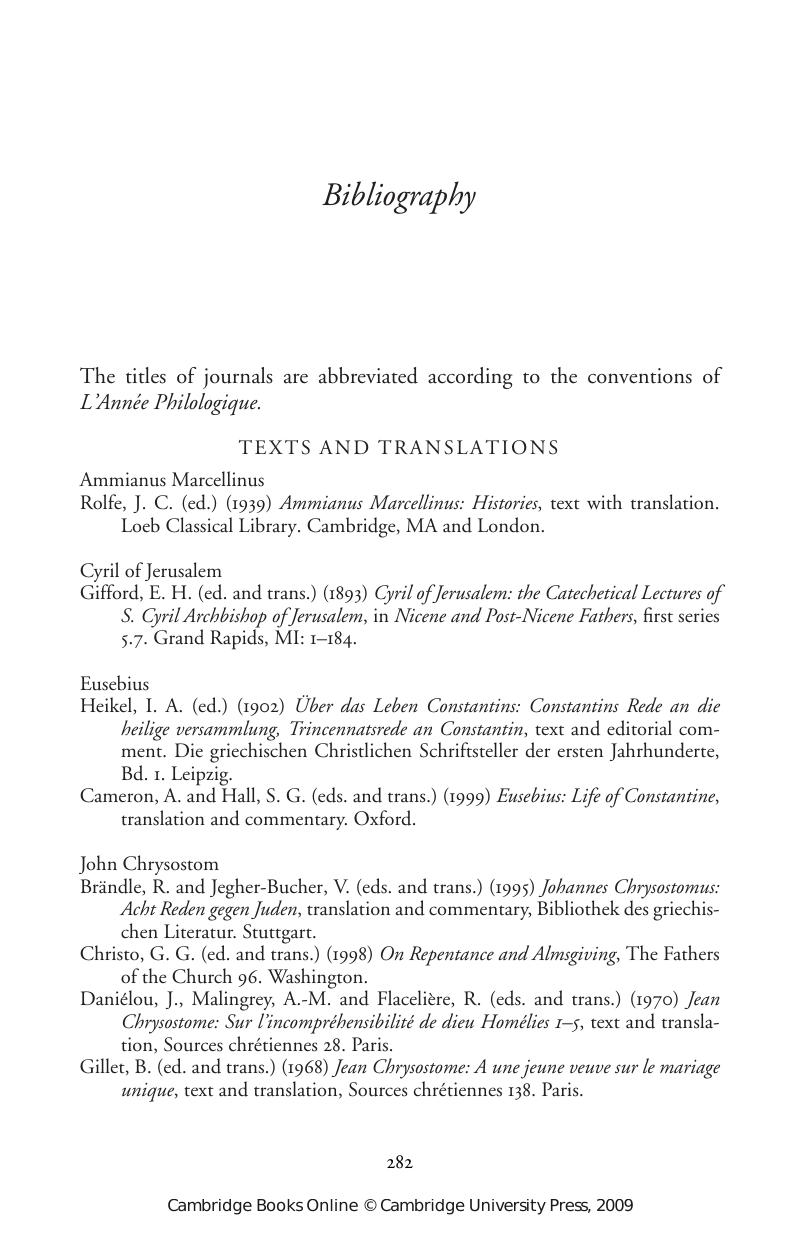Book contents
- Frontmatter
- Contents
- Preface
- List of abbreviations
- Part I INTRODUCTION
- Part II CONSTRUCTED AND STRATEGIC RELIGIOUS IDENTITIES AND ALLEGIANCES
- Part III RELIGIOUS IDENTITIES AND OTHER FORMS OF SOCIAL IDENTIFICATION
- Part IV RELIGIOUS IDENTITY AND SOCIAL ORGANIZATION
- Part V ASSESSING THE IMPACT OF CONSTRUCTIONS OF IDENTITY
- Bibliography
- Index
- References
Bibliography
Published online by Cambridge University Press: 22 September 2009
- Frontmatter
- Contents
- Preface
- List of abbreviations
- Part I INTRODUCTION
- Part II CONSTRUCTED AND STRATEGIC RELIGIOUS IDENTITIES AND ALLEGIANCES
- Part III RELIGIOUS IDENTITIES AND OTHER FORMS OF SOCIAL IDENTIFICATION
- Part IV RELIGIOUS IDENTITY AND SOCIAL ORGANIZATION
- Part V ASSESSING THE IMPACT OF CONSTRUCTIONS OF IDENTITY
- Bibliography
- Index
- References
Summary

- Type
- Chapter
- Information
- Religious Identity in Late AntiquityGreeks, Jews and Christians in Antioch, pp. 282 - 307Publisher: Cambridge University PressPrint publication year: 2007



